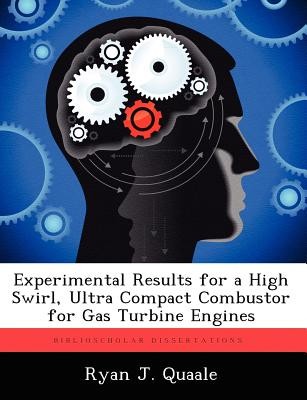
- We will send in 10–14 business days.
- Author: Ryan J Quaale
- Publisher: BiblioScholar
- ISBN-10: 1249594294
- ISBN-13: 9781249594291
- Format: 18.9 x 24.6 x 0.7 cm, minkšti viršeliai
- Language: English
- SAVE -10% with code: EXTRA
Experimental Results for a High Swirl, Ultra Compact Combustor for Gas Turbine Engines (e-book) (used book) | bookbook.eu
Reviews
Description
Laser Doppler Velocimeter (LDV) experiments have been conducted within the cavity of an atmospheric pressure, small scale, Ultra Compact Combustor (UCC). The UCC uses highly swirled flow in a cavity around the outside periphery of the combustor to generate high centripetal acceleration in the fluid. This enhances mixing and leads to a very short axial flame length. Additionally, due to the circumferential velocity, much of the residence time required by the flame is provided by the circumference of the engine rather than axial length as in conventional combustors. These two effects combine to produce observed flame lengths less than half those of conventional swirl stabilized combustors. These short flame lengths lend themselves to reduced engine size and weight and open the possibility for inter-turbine burning (ITB) reheat cycles for aircraft engines.
EXTRA 10 % discount with code: EXTRA
The promotion ends in 21d.16:43:04
The discount code is valid when purchasing from 10 €. Discounts do not stack.
- Author: Ryan J Quaale
- Publisher: BiblioScholar
- ISBN-10: 1249594294
- ISBN-13: 9781249594291
- Format: 18.9 x 24.6 x 0.7 cm, minkšti viršeliai
- Language: English English
Laser Doppler Velocimeter (LDV) experiments have been conducted within the cavity of an atmospheric pressure, small scale, Ultra Compact Combustor (UCC). The UCC uses highly swirled flow in a cavity around the outside periphery of the combustor to generate high centripetal acceleration in the fluid. This enhances mixing and leads to a very short axial flame length. Additionally, due to the circumferential velocity, much of the residence time required by the flame is provided by the circumference of the engine rather than axial length as in conventional combustors. These two effects combine to produce observed flame lengths less than half those of conventional swirl stabilized combustors. These short flame lengths lend themselves to reduced engine size and weight and open the possibility for inter-turbine burning (ITB) reheat cycles for aircraft engines.


Reviews